The Geumgang Nature Biennale: Finding Bears In Gongju, Korea
I recently took a spur of the moment trip down to Gongju, Korea as the clouds parted, the sun began to shine, and all we wanted to do was get out to see something. I had tagged a few things on my map to check out and one was a forest that seemed to have bears! Okay, no, there are not really bears in Korea, but there are some whimsical bear installations, among other things, along the Yeonmisan Mountain (연미산) trails in Gongju thanks to the Geumgang Nature Biennale (금강자연미술비엔날레).
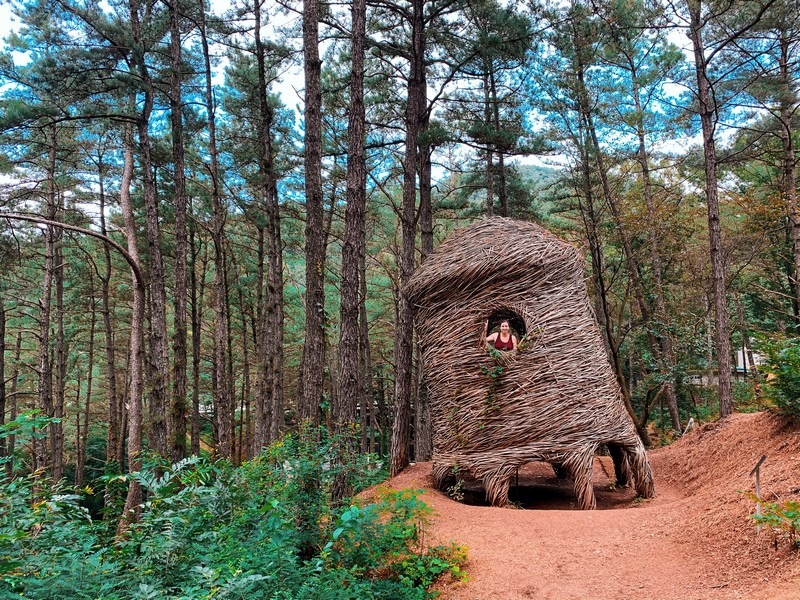
I love finding art parks and art installations in unique places and art installations in forests is really whimsical and fun. Do you? If you want to go to one of the best things to do in Chungcheongnam-do, then this is it! Then, after you see this cool spot, also head to Gongju’s Yugu Mural Village. It’s another great artistic spot in the area to find.
Make sure you get all of the details so you’re good to go.
- How To Get To Gongju From Seoul
- What To Know About Gongju
- Basic Information
- Where To Stay In Gongju
- What To Know About The Biennale
- What To See
(This post contains affiliate links, which means I receive a certain percentage of a sale if you purchase after clicking at no cost to you. Thank you for your support.)
Gongju Itinerary
How To Get To Gongju From Seoul
Venue: Yeonmisan Nature Art Park (연미산자연미술공원)
Address: 98 Yeonmisangogae-gil, Useong-myeon, Gongju-si, Chungcheongnam-do (충청남도 공주시 우성면 연미산고개길 98
By Public Transportation: From Seoul Express Bus Terminal, take a bus to Gongju Bus Terminal. The bus takes an hour and a half and costs less than W10,000. There is also a Gongju Train Station however it’s closer to go to via bus to the bus station. From the bus station, you should go outside and cross the street to the bus stand and you can take bus 741. Get off at the fourth stop called Yeonmisan. It takes about 6 minutes. Walk up the road in the same direction the bus was going just 185 meters to find the entrance.
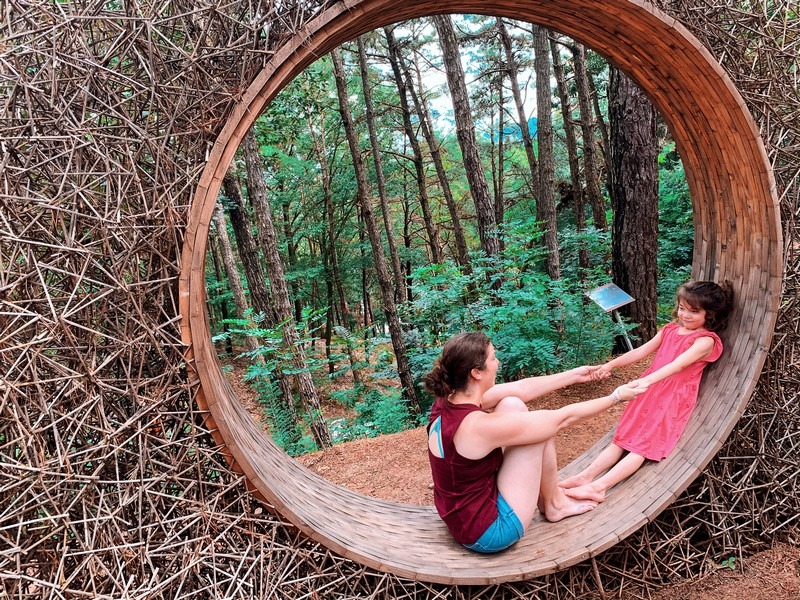
What To Know About Gongju
Gongju is a city in Chuncheongnam-do which is a bit less than 2 hours south of Seoul. Gongju was formerly named Ungjin and was the capital of the Baekje Kingdom from AD475 to 538. Gongju was an important center for the kingdom until its fall in 660. To learn more about the fall and have mud flat fun, you could also head out to Seochon-gun to see where the Bipeolpo naval battle, and the second and third happened. Seocheon is home to the estuary that was once the military and diplomat gateway when Ungjin was the capital. It was an interesting connection to see on a trip there.
Also interestingly, in 2004 the Prime Minister of Korea actually announced that this city would become the new capital of Korea by 2030 but that was met with controversy and nothing has been done about it to date. But it’s an interesting factoid I thought. Because of the history, there are some great historical artifacts to see but it’s not an overly touristy area.
Check out this guide to Gongju so you don’t miss any of the sites.
Basic Information
Website: http://www.natureartbiennale.org/
Hours: Tuesday – Sunday: 10:00am ~ 6:00pm
Admission: Adults: W5,000; Children: W3,000
Amenities: Note that there are bathrooms once you enter however there is nothing else. There is a cafe with waters and juices near the ticket stand and in the heat and humidity of this summer, I highly recommend making sure you grab a bottle of water before you head in.
Where To Stay In Gongju
Gongju has a great traditional village and fortress wall and other traditional sites all together which is great for tourists. It’s across the river from Gongju’s more downtown area where the locals are but it’s great for tourists and I recommend staying there. There are plenty of new Hanok hotels with floor and bed sleeping options.
Gongju Honghuiguan Guesthouse
This guest house is a beautiful traditional Hanok style with the floor sleeping and is right across the street from the Gongju Gongsanseong Fortress (공주 공산성). It’s a great location near some of the sites and some great restaurants too.
Book a room at the Gongju Honghuiguan Guesthouse on Agoda.
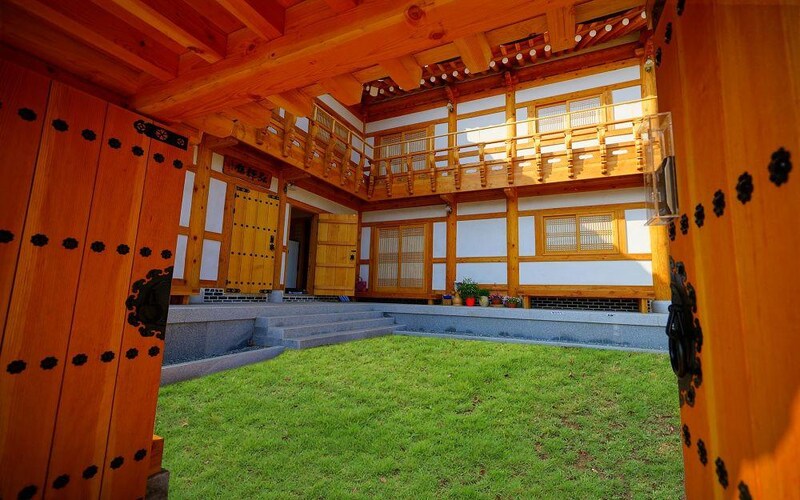
Gongju Moonlight Garden House
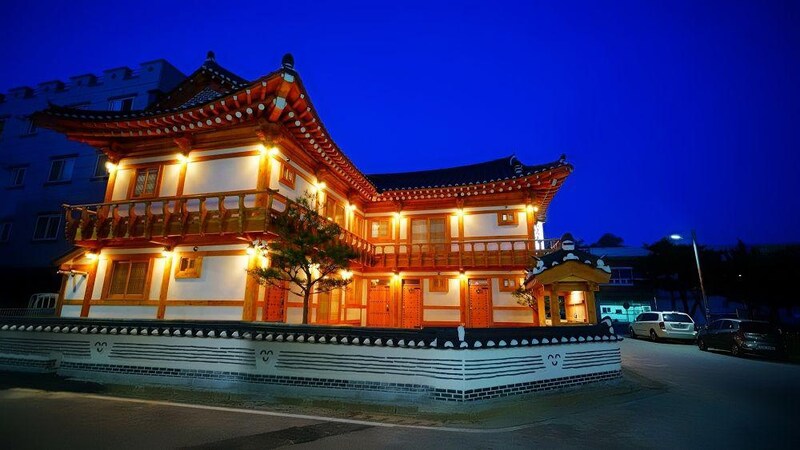
Another nice option in the area is the Gongju Moonlight Garden House. Similarly, the traditional Hanok style stay has floor sleeping options available and is near restaurants that serve local favorites as well as the fortress to explore by day after the art park.
Book a room at Gongju Moonlight Garden House on Agoda.
What To Know About The Biennale
The Geumgang Nature Biennale is an international nature art exhibition hosted by the Korean Nature Artists’ Association that was established in 1981. The artists’ association developed as a field-oriented nature art movement that focused on free expression through installations, drawing, and performance. They seek to comply with the order of nature to harmonize with it.
The biennale features more than sixty installations and about ten of them are devoted to the mascot of Gongju, Goma the bear. The sculptures are all made from natural materials including metal, rock, or wood and they are scattered along trails.
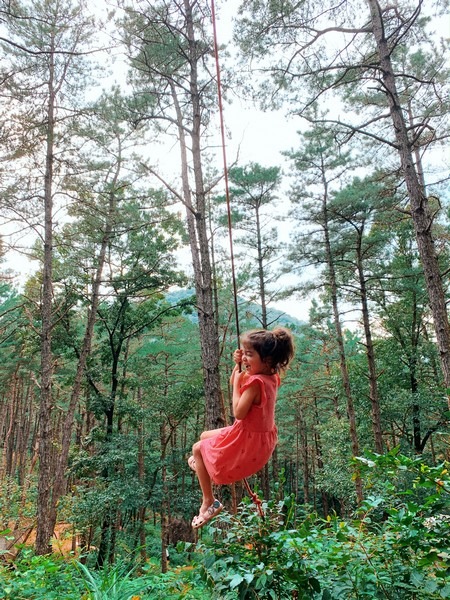
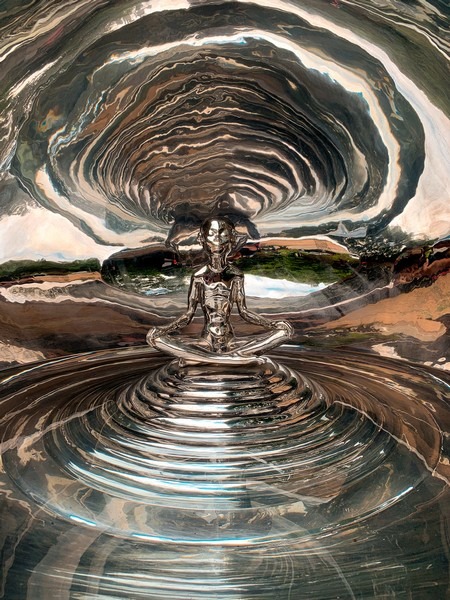
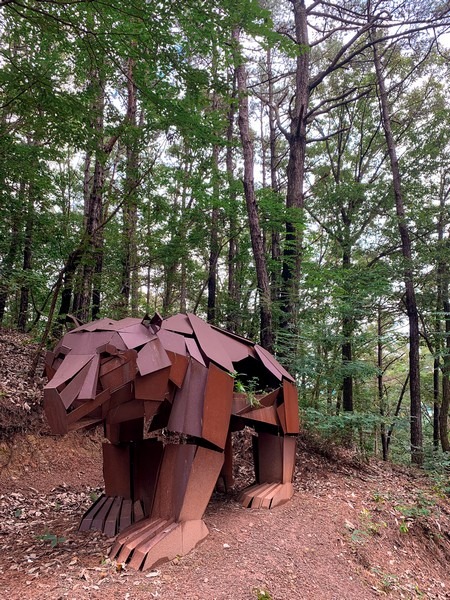
What To See
I LOVE visiting the various art parks around Korea. We love getting time outdoors and walking in the forested mountains is fun but it’s even better when there are beautiful art installations to find hidden along the trails.
The first art park that really piqued my interest was the popular Anyang Art Park which led me to the Gimpo Art Park. Now, every time I see even a hint that there may be installations in a forest like Thomas Dambo’s “Forbidden Giants” in Pocheon or just out in nature like the beautiful Modo Island Sculpture Park, I go! Oh, there’s even a cool Art Road in Hamchang that I trekked out to see once too. Anyway, the bears are what led us right here.
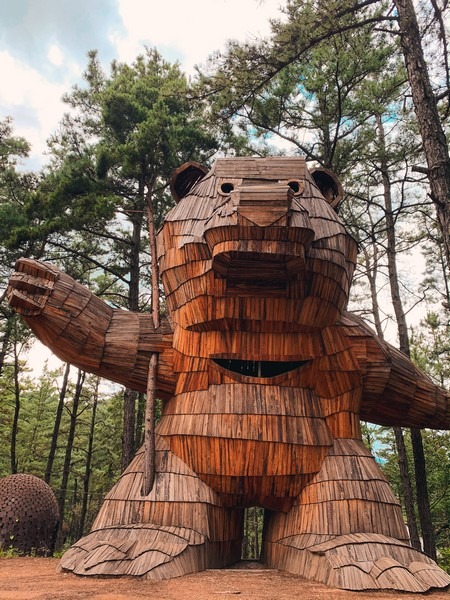
At the entrance, visitors can receive a map, which I highly recommend grabbing so you’re sure you don’t miss anything, and then you’re off. One of the installations that drew me to the event was the giant Pine Bear.
Yeonmisan Mountain is covered with pine trees and surrounded by the Geum River. There’s a legend about a female bear and a woodcutter that talks about a love-less love. The 10 meter tall bear that Yohan Ko built is not meant to focus on the legendary bear in the tale but on the trees which the bear hugs.
You can actually climb up into the bear too all the way to look out the mouth and the eyes. I should have stood in front of the bear so you could really see how massive it is, but I think you can tell what with how it’s head is just brushing the bottom branches of those pine trees. Massive!
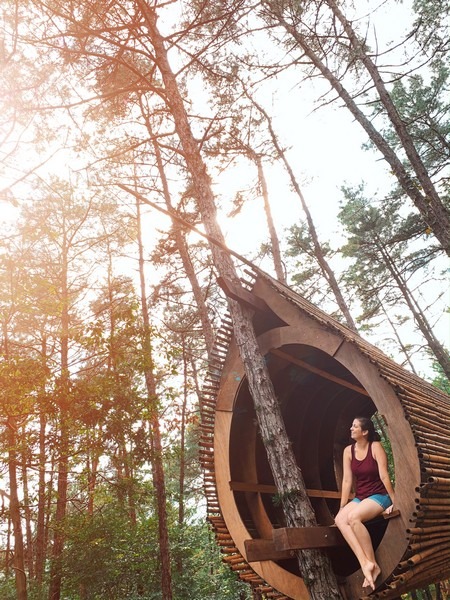

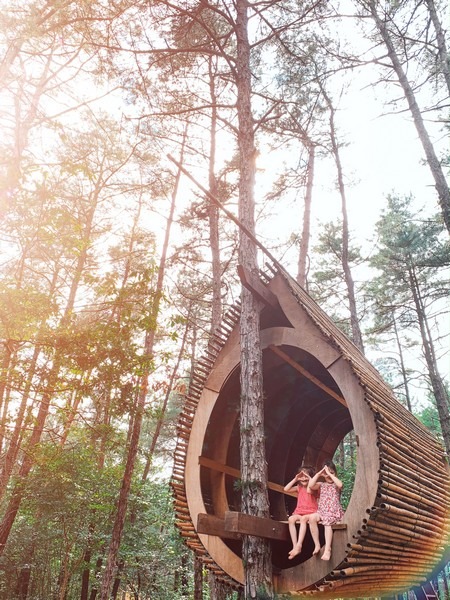
As you walk, you’ll see installations that you’re meant to interact with, sit on, or climb into and others that you just enjoy from the surrounding area. Take the time to see them all, walk up and down the paths and follow the map to make sure you don’t miss anything.
The Leaf Shelter is all about the shape of living in a relationship. Trees that grow close together influence each other’s shape, reads the placard, and often the shape of a leaf corresponds to the shape of the tree it belongs to. The shelter is a space where a person can meditate, or if you’re like us, your kids can play and you can try to find some calm in the fun. Think about the relationship between living organisms and commune as you sit between the branches and the trees.
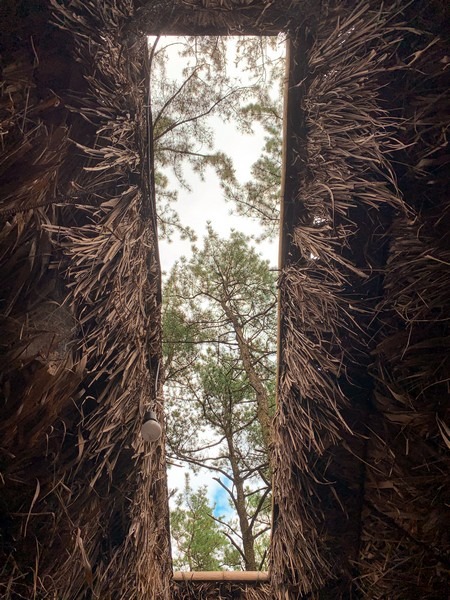
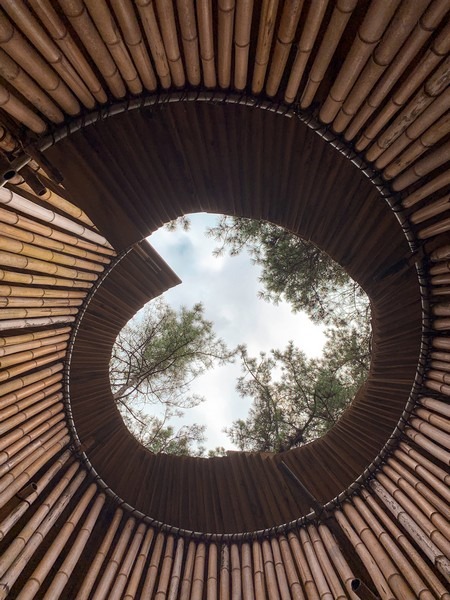

There were a lot of just amazing installations that play with nature and allow the visitor to enjoy nature in different ways. You walk around and within and then peer at the forest through the windows and the ceiling skylights. Climb up into a bird’s nest for a bird’s eye view. We had a great experience and I absolutely loved all of the different installations in the exhibition. It was far more than I expected. It’s a really enjoyable weekend trip out of Seoul.
Did you like this post? Pin It!
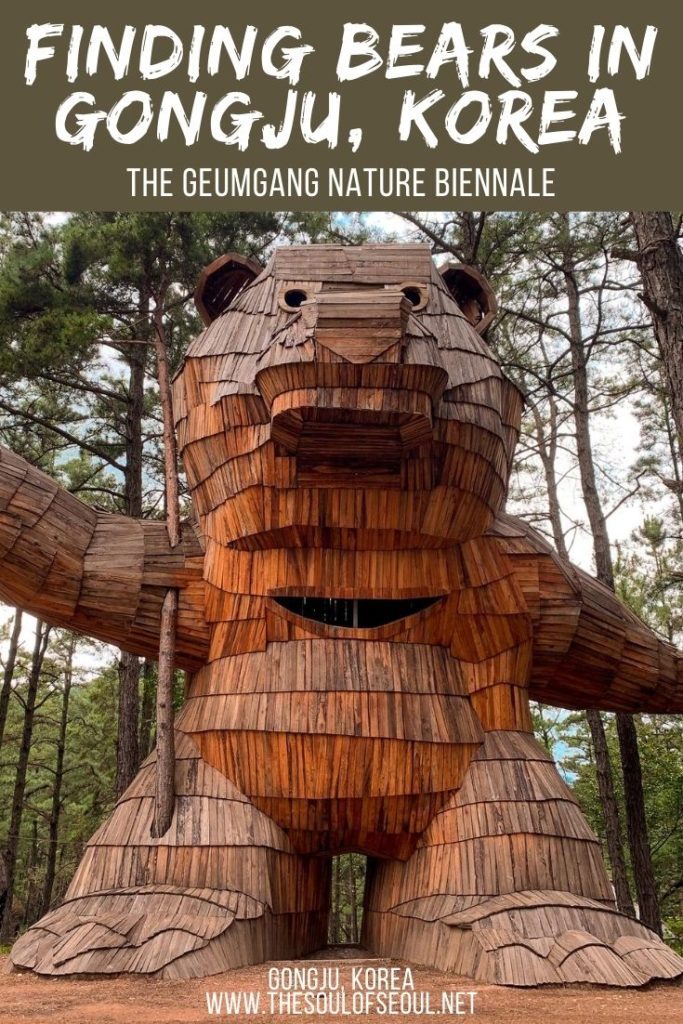

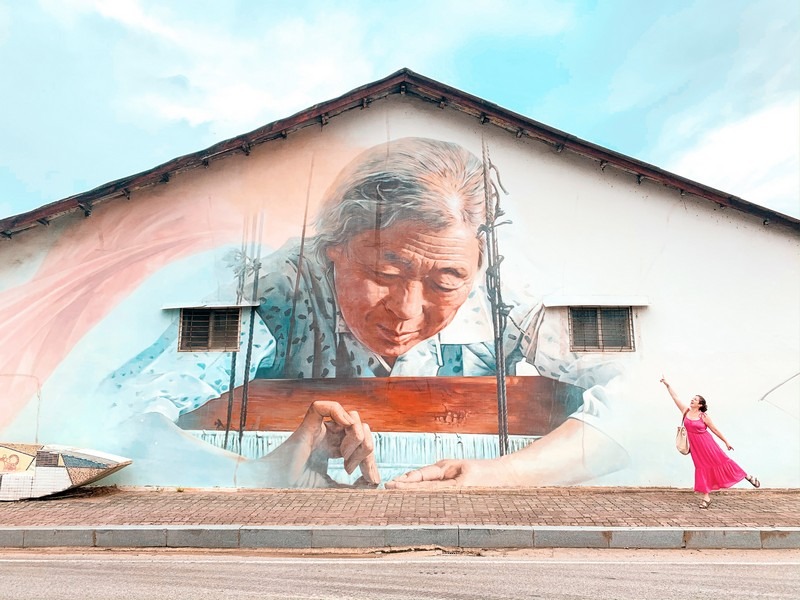

2 Comments
Channy
Hi! Do know if there is a way to check if bus terminals or train stations have lockers for luggage? I will be in Daejeon and would love to do this before going to Seoul. So trying to figure out if Gongju Bus Terminal has lockers 🙂 thank you!
Natalie Leung
wow! the parks look amazing in Korea! I hope to visit one day <3
x Natalie